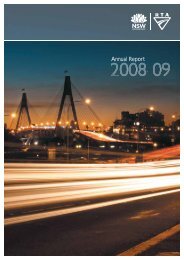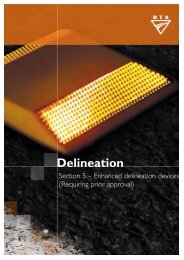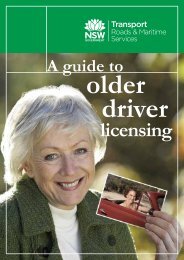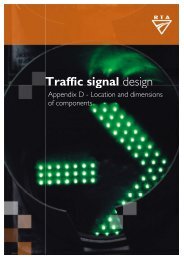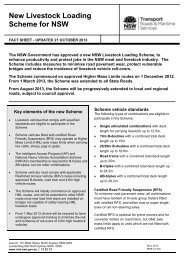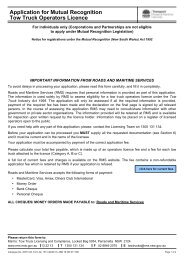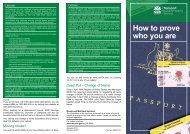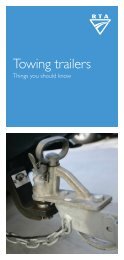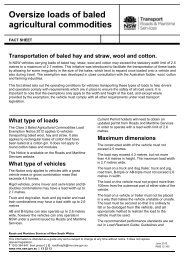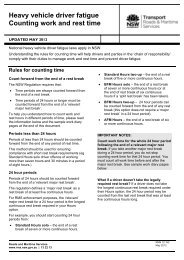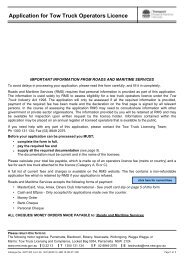Hazard perception handbook - RTA
Hazard perception handbook - RTA
Hazard perception handbook - RTA
Create successful ePaper yourself
Turn your PDF publications into a flip-book with our unique Google optimized e-Paper software.
Safe gaps when overtaking<br />
Overtaking other vehicles can be hazardous, particularly on high-speed, two-way<br />
roads. If you misjudge the gap needed to overtake safely you could collide headon<br />
with an oncoming vehicle. Head-on crashes are usually very severe because the<br />
speed of your car combines with that of the other. for example, a head-on crash<br />
where both cars are travelling at only 60 km/h gives a collision speed of 120 km/h.<br />
This is the equivalent of driving into a stationary object at 120km/h.<br />
you also need enough space to avoid colliding with the vehicle that you are<br />
overtaking. Selecting safe gaps for overtaking is a key hazard <strong>perception</strong> skill that<br />
takes time and practice to develop.<br />
Overtaking is similar to, but not the same as passing other vehicles on multi-laned<br />
highways, freeways or arterial roads. It is much harder and far more dangerous.<br />
When overtaking on a two-way road you need to cross the centreline and travel on<br />
the wrong side of the road.<br />
A WORd Of CAUTION<br />
The decision to overtake or not overtake another vehicle is your own. Most of the<br />
time you overtake to maintain the speed at which you want to travel. However,<br />
sometimes you will need to overtake or pass stationary or broken down vehicles.<br />
The best thing to remember about overtaking is not to do it unless you really have<br />
to.<br />
5<br />
<strong>Hazard</strong> <strong>perception</strong> <strong>handbook</strong> 51



